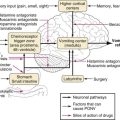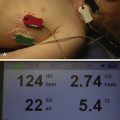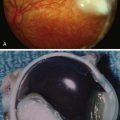Talking about the idea of personal health management, consciousness is fundamental. Understanding vital parameters which includes blood oxygen levles may be instrumental in keeping ordinary well-being and figuring out ability health problems. Blood oxygen monitor. additionally known as pulse oximeters, have emerged as crucial equipment for tracking oxygen saturation ranges in the bloodstream.
Because these devices are portable and easy to use, they allow individuals to take proactive steps to protect their health. In this guest post, we will explore the importance of blood oxygen monitoring devices and highlight their benefits for health awareness.

Understanding Blood Oxygen Monitoring
Blood oxygen monitoring is a non-invasive method used to measure the oxygen saturation level (SpO2) in the bloodstream. Oxygen saturation refers to the percentage of oxygen-bound hemoglobin relative to the total hemoglobin in the blood. A normal blood oxygen saturation level typically falls within the range of 95% to 100%. Monitoring SpO2 levels is crucial for assessing respiratory function and ensuring adequate oxygen supply to vital organs and tissues.
The role of oxygen levels in respiratory conditions and diseases
Oxygen is essential for sustaining life, playing a crucial role in the respiratory process whereby oxygen is absorbed into the bloodstream and transported to cells throughout the body. Respiratory conditions and diseases can disrupt this process, leading to decreased oxygen levels in the blood and potentially compromising overall health.
- Understanding Oxygen Saturation: Oxygen saturation, commonly referred to as SpO2 (peripheral capillary oxygen saturation), is a measure of the percentage of oxygen-saturated hemoglobin in the blood. A normal oxygen saturation level typically falls within the range of 95% to 100%. Monitoring oxygen saturation levels is crucial for assessing respiratory function and ensuring adequate oxygen supply to vital organs and tissues.
- Respiratory Conditions and Diseases:
a. Chronic Obstructive Pulmonary Disease (COPD): The progressive lung disease characterized by airflow limitation and respiratory symptoms such as coughing, wheezing, and shortness of breath. In COPD, damage to the airways and lung tissue impairs the ability to breathe effectively, leading to decreased oxygen levels in the blood.
b. Asthma: A chronic inflammatory condition of the airways that causes episodes of wheezing, breathlessness, chest tightness, and coughing. During asthma exacerbations, airway inflammation and constriction can result in decreased airflow and oxygen deprivation.
c. Pneumonia: It is an infection of the lungs characterized by inflammation of the air sacs, or alveoli, which can fill with fluid or pus. In severe cases, pneumonia can impair gas exchange in the lungs, leading to hypoxemia (low oxygen levels in the blood) and respiratory failure.
d. Sleep Apnea: A sleep disorder characterized by pauses in breathing or shallow breaths during sleep. Episodes of apnea can disrupt oxygen flow to the body and brain, resulting in nighttime hypoxemia and daytime fatigue.
e. Pulmonary Embolism: Pulmonary embolism is a potentially life-threatening condition caused by a blood clot that travels to the lungs and blocks blood flow. Reduced blood oxygen levels can occur as a result of impaired circulation and compromised gas exchange in the lungs. - Importance of Oxygen Monitoring: Monitoring oxygen levels is essential for managing respiratory conditions and diseases effectively. By measuring oxygen saturation levels with a pulse oximeter, healthcare providers can assess respiratory function, monitor disease progression, and guide treatment decisions. Regular oxygen monitoring enables early detection of hypoxemia and allows for prompt intervention to prevent complications and improve patient outcomes.
Importance of Blood Oxygen Monitoring:
- Early Detection of Respiratory Issues: Blood oxygen monitor serve as early warning systems for detecting respiratory issues such as asthma, chronic obstructive pulmonary disease (COPD), pneumonia, and sleep apnea. A decline in blood oxygen saturation levels may indicate compromised lung function or breathing difficulties, prompting timely intervention and medical attention.
- Monitoring Chronic Health Conditions: Individuals with chronic health conditions such as heart disease, lung disease, and diabetes can benefit from regular blood oxygen monitoring. Fluctuations in SpO2 levels may signal worsening symptoms or exacerbations of underlying health conditions, allowing for proactive management and treatment adjustments.
- Assessing Physical Fitness Levels: Blood oxygen monitoring can be used to assess physical fitness levels and endurance during exercise or physical activity. Monitoring SpO2 levels before, during, and after exercise provides valuable insights into cardiovascular health, oxygen utilization, and overall fitness performance.
- Altitude and Travel Considerations: Blood oxygen monitors are indispensable tools for individuals traveling to high-altitude destinations or engaging in activities such as hiking, skiing, or mountain climbing. At higher altitudes, the air pressure decreases, resulting in lower oxygen levels in the atmosphere. Monitoring SpO2 levels helps travelers acclimatize to altitude changes and avoid altitude sickness or hypoxia-related complications.
Benefits of Blood Oxygen Monitoring Devices:
- Portable and Convenient: These monitors are compact, lightweight, and portable, making them ideal for use at home, during travel, or on the go. Their user-friendly design allows for quick and easy measurements, enabling individuals to monitor their SpO2 levels anytime, anywhere.
- Non-invasive and Painless: Unlike traditional blood tests or medical procedures, blood oxygen monitoring is non-invasive and painless. The device is simply placed on the fingertip, earlobe, or forehead, and within seconds, it provides accurate SpO2 readings without the need for needles or blood samples.
- Real-time Feedback: It provides real-time feedback on SpO2 levels, allowing individuals to track changes and trends over time. Continuous monitoring enables early detection of abnormalities or fluctuations in oxygen saturation, empowering users to take prompt action as needed.
- Affordable and Accessible: The oxygen monitors are affordable and widely accessible, making them valuable tools for individuals of all ages and backgrounds. With advancements in technology and manufacturing, these devices are now more affordable and reliable than ever before, ensuring widespread availability to consumers worldwide.
Conclusion
Blood oxygen monitor plays a vital role in promoting health awareness and empowering individuals to take proactive measures to safeguard their well-being. As essential tools for assessing respiratory function, monitoring chronic health conditions, and optimizing physical performance, these oxygen monitors offer valuable insights into oxygen saturation levels and overall health status. With their portable, user-friendly design and affordable pricing, these devices are invaluable assets for individuals seeking to prioritize their health and well-being.
If you want to purchase robust Blood oxygen monitors then you should know that Origin Medical is a leading provider of high-quality medical devices and healthcare solutions, committed to empowering individuals to take control of their health and wellness. With a focus on innovation, reliability, and affordability, Origin Medical strives to enhance health awareness and improve quality of life for people around the world. From blood oxygen monitors to digital fever thermometer, Origin Medical offers a wide range of products designed to meet the diverse needs of consumers and healthcare professionals alike.





